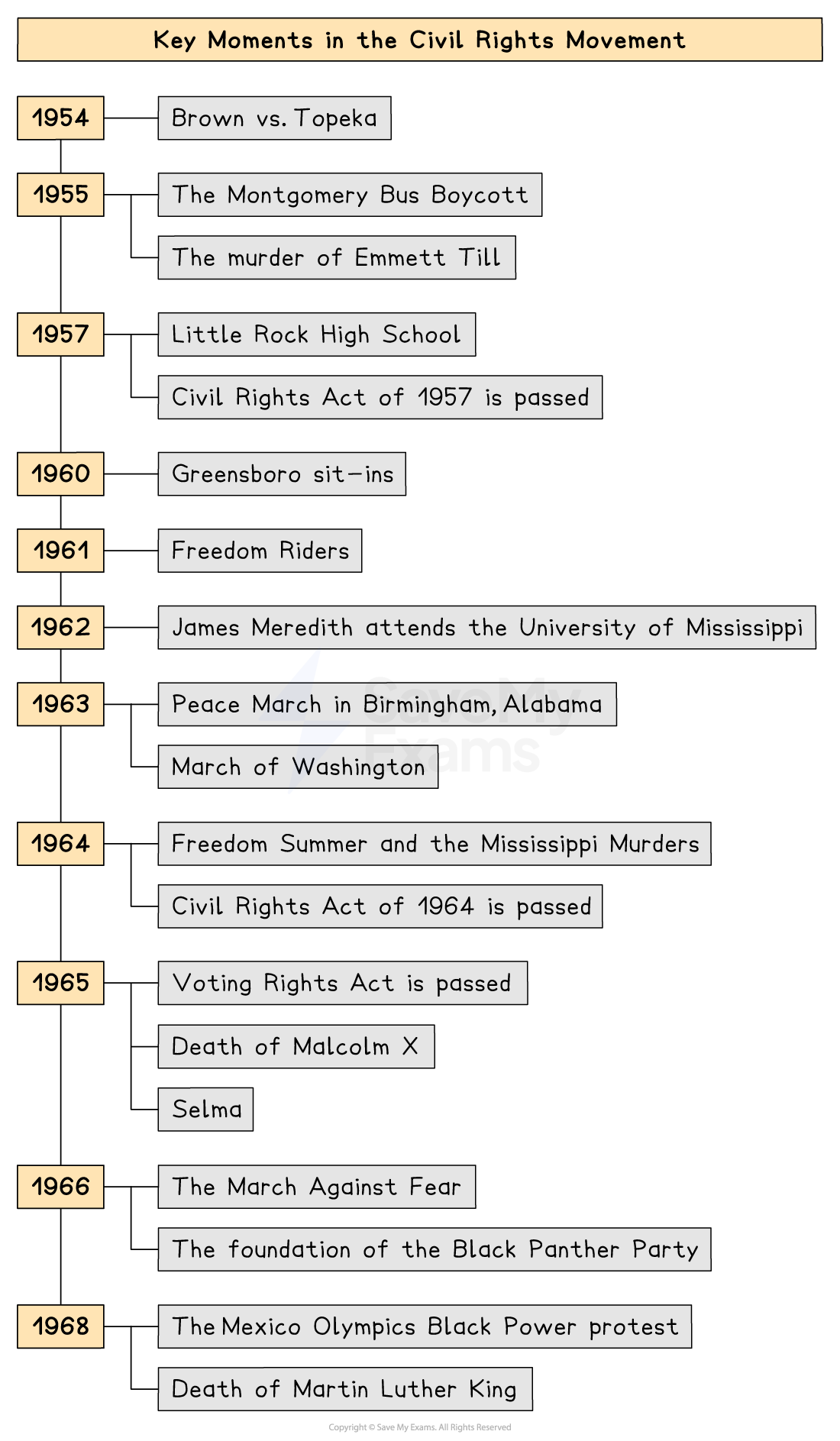The Development of Civil Rights by 1975 (Edexcel GCSE History): Revision Note
Exam code: 1HI0
Timeline

Summary
When Richard Nixon became president in 1969, he tried to appease White Americans who were concerned about rioting and the rise of the Black Power movement. At the same time, he tried to appeal to Black Americans to secure their votes in elections. By the mid-1970s, there had been undoubted improvements in the lives of many Black Americans. However, it was also clear that considerable progress had to be made for there to be true equality between Black and White Americans.
Richard Nixon & the civil rights movement
Richard Nixon became president in 1969 and tried to appeal to both Black and White voters
To appeal to White voters, he argued that improved civil rights were a way to stop riots and control Black Americans
To appeal to Black voters, he encouraged ‘affirmative action’ in employment and appointed more Black officials to work in the White House than ever before
Nixon also improved access to training for Black Americans who wanted to start their own businesses
Nixon was criticised by his political opponents for encouraging Black American homeownership
Nixon claimed homeownership would prevent riots as he didn’t believe Black Americans would destroy their own property
His opponents claimed this was patronising and overly-simplistic
What developments had been made in civil rights by 1975
In some ways, there had been clear and undeniable progress in securing civil rights for Black Americans since the 1950s
In other ways, it was clear that Black Americans were still very much treated as second-class citizens
Evidence of improved civil rights by 1975
‘Jim Crow’ Laws had been abolished nationwide
Voting and political rights were the same for Black and White Americans
The number of middle-class Black Americans who owned their own homes had increased
American schools were desegregated
There were 15 Black American members of Congress
The gap in average pay between Black and White Americans had closed
Evidence that not enough progress had been made in Civil Rights by 1975
Life expectancy for Black Americans was five years less than for White Americans
Black Americans were twice as likely to be unemployed
Black Americans were three times more likely to live in poverty
The percentage of Black elected officials did not reflect the size of America’s Black population
The average income of a Black American household was just over half that of a White American household

Unlock more, it's free!
Did this page help you?